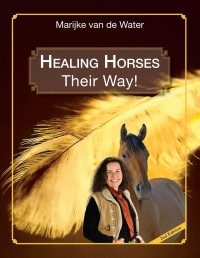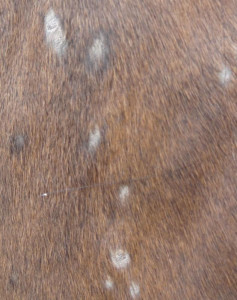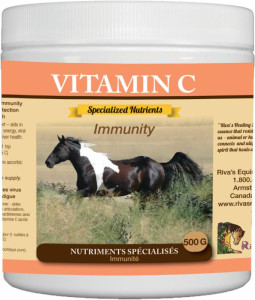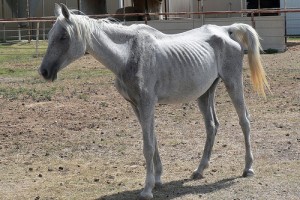Author Archive
Hormonal Mares
Editor’s Note: This article has been sourced via Riva’s Remedies.
Many mares exhibit hormonal problems through mood and behaviour changes. This is often seen during a mare’s cycling days, however many mare owners report problems with their behaviour on a daily basis even when they are not cycling. Unfortunately, too many times we have simply attributed this to “mares being mares”, and have not recognized that these girls are not feeling well and that they can suffer from the same anxiety, irritability, aggression, sadness and depression as women do during PMS or an unhealthy menopause. They can also have problems with cycling pains. Pain and/or emotional symptoms make it very hard for mares to tolerate being handled or ridden, to compete and/or to cooperate with other horses. Unfortunately these behaviours often get dismissed as a personality or training problem.
Hormones are powerful chemicals that have a profound effect on the neurotransmitters of the brain: estrogen has an excitatory effect on the brain, increasing serotonin and acetylcholine levels whereas progesterone has a more calming effect. Serotonin is responsible for creating positive moods and acetylcholine is necessary for focus and memory.
As with humans, diet can be an important factor – high-sugar feed such as oats or sweet feed will exacerbate hormonal symptoms. Horse owners also report that high quantities of alfalfa can negatively affect behaviour as well. (For humans, caffeine and dairy products are the most common dietary culprits that contribute to PMS and menopausal symptoms.)
Fortunately, when hormonal mares are supplemented with the appropriate nutrients and/or hormone-balancing herbal blends they will quickly improve to experience an increase in stable moods and suffer less depression, less aggression and more motivation. Beneficial nutritional supplements include the Riva’s Vitamin B6 (pyridoxine) and Riva’s Primrose Oil. Vitamin B6 is essential for the synthesis of both hormones and neurotransmitters and has the added benefit of regulating blood sugar levels. Vitamin B6 will also support pituitary and thyroid function as these endocrine glands rely on this vitamin for optimum health. Riva’s Primrose Oil provides essential fatty acids and 9% gamma-linolenic acid (GLA) which is found in the plant seeds of evening primrose oil. Primrose oil also has anti-inflammatory properties which helps with skin conditions and arthritis.
Herbal blends for hormone balance are also available as they re-balance the estrogen and progesterone levels and calm the emotions. The Riva’s Herbal Blend for Mares contains black cohosh, blessed thistle, chamomile and wild yam root to tone the ovaries and sooth the nerves. This blend will also effectively regulate erratic cycles, ease uterine cramping and/or help to increase fertility – although it is not advisable to feed it during pregnancy. This blend has an effective stabilizing effect on moods.
If the thyroid or pituitary glands are needing support in addition to the reproductive hormones then add the Riva’s Hormone Boost which contains Ashwaghanda, Chaste Berry, Kelp, Licorice Root and Raspberry Leaf. This formula will strengthen the endocrine gland system, relieve stress and balance hormone levels. It is also beneficial in cases of Equine Metabolic Syndrome, Insulin Resistance and Cushing’s since it supports the pituitary and adrenal glands and helps to regulate insulin levels and metabolism.
If the hormones are stabilized but your mare still appears uncooperative with an attitude then she either has other underlying emotional issues (she needs to be heard) or the training program should be assessed. Some “mare behaviour” has been allowed to become a pattern, in which case competent but compassionate handling will help them establish new patterns. And don’t put food down in front of “cranky” mares until their ears come forward – this might take time at first but they should learn to “smile” in the presence of food.
With good food, supplements and common-sense handling your mare will be a happy, healthy and willing partner.
“Riva’s Healing Spirit awakens the essence that resides within each one of us
– animal or human – the heart of which connects
and aligns us with the greater spirit that heals all.”Marijke van de Water, B.Sc., DHMS
Equine Health & Nutrition Specialist
Homeopathic Practitioner
Medical Intuitive & Healer
Author & Educator
For more information on your horses’ diet,
nutrition and health conditions read
“Healing Horses Their Way”
Watch the Riva’s Remedies video on YouTube “Hormonal Mares and Geldings”
Sweet Itch Solution
With the warmer weather on the way it’s time to prepare the horses who have a hypersensitivity to insect bites – usually flies, mosquitoes and especially biting midges (“no-see-ums”). Horses become intensely irritated and itchy and will look for almost anything solid to scratch on. This is an internal problem since the insects are attracted to those horses whose immune systems are compromised and/or whose skin is damaged. For more information on how sweet itch occurs click here.
Our clients achieve excellent results with our “sweet itch” protocol of Summer Tincture combined with Vitamin C.
I tried everything to stop my horse from suffering from insect bites and sweet itch. I couldn’t believe how fast your program worked! Thank you.
…A.G. (Vancouver, B.C.)
What’s TRUE about beet pulp
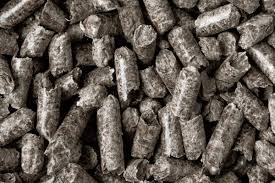
Editor’s Note: This article has been sourced via Riva’s Remedies.
Beet pulp is the fibrous material left over after the sugar is extracted from sugar beets. It’s an excellent source of crude fibre (18%) and contains both insoluble and soluble fibre which is mostly pectin. Pectin is a highly digestible fibre which is why beet pulp is such a good energy source – horses obtain over 75% of their energy from the fermentation of fibre; not from protein, carbohydrates or oil. Beet pulp fibre is also an effective prebiotic that helps the equine hind-gut synthesize natural levels of probiotics which, in turn, helps to maintain the intestinal ecosystem including the immune system. Fibre is a natural detoxifier of the intestines and the liver and beet pulp is also high in calcium.
Beet pulp has a very low glycemic index meaning that it doesn’t cause a blood sugar spike as do grains such as oats, corn or barley. In addition, it will actually help stabilize blood sugar levels due to its high fibre content. And even though most manufacturers add 5-10% molasses to the pellets the glycemic index is still within acceptable levels because the high fibre content slows down any sugar absorption. Therefore, beet pulp of any kind is frequently a suitable feed for metabolic and/or insulin resistant horses or other sugar-sensitive horses.
Unfortunately, there are many misconceptions about beet pulp that are not based on fact. Here is what is TRUE about beet pulp.
- Beet pulp is not high in sugar. It is high in fibre.
- Beets are not treated with chemicals to kill the top leaves – they are mechanically removed.
- The pulp is produced by soaking beets in hot water, not harsh chemicals.
- Beet pulp is not a source of toxic iron; iron is not a toxic mineral, it is vital to good health and many horses are deficient in iron.
- Beet pulp does not contain higher levels of aluminum than table salt and/or oats for example.
- Pesticide levels in beet sugar is zero and the levels in pulp are extremely low.
For many horses, the available energy, the digestible fibre and its activity as a prebiotic makes beet pulp a beneficial feed that over-rides any negative aspects. At this time there is no other healthier substitute which has the same benefits. However, beet pulp is a GMO crop so let your growers know that organic is your choice for all foods. If everyone bought organic food for themselves and for their animals the world would be cleaner, happier, healthier and, most importantly, more humane.
Some horses don’t tolerate beet pulp however so eliminate it from the feed program if there are any signs of indigestion or other symptoms. Always avoid high sugar feeds, commercial feeds, feeds with unknown ingredients, fats/oils and any other high fat foods.
Beet pulp should always be fed soaked. It can absorb four times its dry weight in water making it a good source of water as well. It is not necessary to rinse or wash beet pulp before soaking.
Need an answering service for your business? Try a virtual receptionist by Virtual Assistant Canada.
Understanding Equine Digestion
Learn more about your horses digestion system, some common equine problems, the causes of these problems and the recommended treatments.
Watch this video via Riva’s Remedies
Equine Skin Conditions Sarcoids, Sweet Itch, Abscesses
Learn about the causes and natural treatment of common skin conditions including wounds, abscesses, sweet itch and sarcoids.
Watch this video via Riva’s Remedies
Ten Parasite Pointers
Editor’s Note: This article has been sourced from Riva’s Remedies and has been originally written by Equine Health & Nutrition Specialist, Marijke van de Water
1) Spring and fall are good times to address parasites since once the eggs are swallowed in the fall they will prepare to hibernate in the intestinal walls or encyst to other organs for the winter. Then in the spring they begin to migrate out of the intestines and into the grass pastures to lay eggs.
2) Parasites produce toxins including ammonia; ammonia stresses the liver and kidneys, interferes with brain function and contributes to laminitis.
3) Encysted parasites are those parasites in the larval state that have formed a protective membrane around themselves and have migrated from the hindgut (large colon and cecum) through the intestinal walls and into the liver, kidneys and/or heart/arteries. If left untreated they are capable of causing many health problems: weight loss, a dull coat, poor appetite, diarrhea, fatigue, liver stress, leaky gut and colic.
4) Horses with long-term/heavily infested parasites will eventually end up with encysted larvae in the other organs – liver, heart, pancreas and kidneys. Encysts do not normally respond to herbal or homeopathic dewormers and must be chemically dewormed.
5) Most horses with long-term and/or heavy loads of parasites are anemic due to the blood loss. Low iron levels have a significant effect on overall health including lowering the resistance to parasites, contributing to chronic infections and depressing the immune system. Cases of anemia should always be treated with Iron-Up, an organic form of iron.
6) Chemical de-wormers, while sometimes necessary, do not always need to be administered as a full dose (i.e. entire syringe) for every horse. Mildly infected horses need less than a full dose and some horses, including those with encysts, will require a small amount repeated two or three times one to two weeks apart. Heavily infested horses also usually require more than one dose.
7) It is not necessary to “syringe” a horse with a chemical de-wormer – this is an invasive practice. Smaller doses can easily be hidden in feed and larger doses can be spread out throughout the day also hidden in feed.
8) Make use of the moon cycles which affect parasite behaviour. In the fall, de-worm a day before or just before the new moon at which time they are looking for hibernation.
9) No matter what de-worming program you are using – natural or chemical – make use of regular fecal analyses to show if your program is working or not. And don’t de-worm your horses unless they have worms and don’t use chemicals for prevention.
10) The best defense against parasites is a healthy hindgut with a balanced eco-system, adequate levels of important nutrients and a strong immunity. Horses with strong digestion and intestines are not attractive to parasites who must rely on weakening their host for optimum survival. In fact, it is estimated that only one-third of the herd actually carries the parasite loads.
A good digestive health program will keep any necessary chemical de-wormings to a minimum:
Hindgut Health Program
- a) No high sugar/grain feeds
- b) No oils
- c) No high protein
- d) Regular exercise
Natural Remedies & Supplements
a) Pro-Colon Probiotics – twice per year for 3-4 weeks
Balances the eco-system, improves immunity, helps heal leaky gut.
b) Para+Plus Herbal Blend – ¼ – ½ cup daily for 3 – 4 weeks; twice per year
Natural anti-parasitic, intestinal anti-biotic, anti-fungal; liver drainage.
c) Iron-Up – 1-2 tsp (= 250-500 mg) as required for anemia.
Anemia, parasite resistance, energy, immunity, circulation.
e) Vitamin B12 – 1 tsp daily = 6,000 mcg daily
Anemia, colon health, diarrhea, leaky gut, liver detoxifier.
f) Folic Acid – 1 tsp daily = 10 mg daily
Anemia, parasite resistance, promotes the production of natural probiotics
Elvis the Cart Pony Makes Amazing Changes
Editor’s Note: This article has been sourced via Riva’s Remedies.
I have a 27 year old pony named Elvis. But in the spring of 2015 my trainer and I decided to retire him as he had gone from being bomb proof on the road pulling a cart three times a week to nine rides in a row that were beyond scary from his constant spooking. If we would have kept going he would have hurt us both. Aside from his increasing bad nerves Elvis was obese no matter what we did or how little we fed him, he had a crested neck, constant gas, was very lethargic, his eyesight was bad and he had bloody white lines in his hooves.
Marijke came out to the farm in late spring and after spending a couple of hours with him she explained that he was insulin resistant and had erratic sugar levels. She assured me that he would be okay and also that his eye sight would likely come back. She formulated a complete program including soaking the hay, feeding all of it in the Nibble Net slow feeders and giving him specific supplements: Pro-Colon probiotics, Blood Sugar Formula (homeopathic), Vitamin B12, Hormone Boost and Happy Horse.
There was immediate improvement in him although he gorged himself on the hay bags at first and I was not allowed to let him run out of hay. I ended up having to put two large hay bags out for him and filling them three times per day. I never thought he would slow down but Marijke assured me again that he would eventually slow down his consumption of hay. It took about two months but he finally slowed down and now he eats normally.
Within two weeks after starting the program he was back hooked up to his cart and the little old man and I were back out. Only one time I did not soak his hay and the next day he was so obviously spooky – like he had been in past – that he backed me into traffic. So I knew it was so very important with him for me to follow the program to a tee to keep his blood sugar levels stable.
Now he has lost all his weight, there is no more gas, he has more energy, there is no more blood in the white line, and most importantly he is really happy. My trainer and I were amazed at the changes in him and I am so so grateful to Marijke and to her assistant Darla who is always such a big help when ordering. My only regret is not listening to Darla and contacting you sooner so I would know exactly what was wrong and what my horses needed. I have told everyone about you and Riva’s Remedies and the people that come here see the difference. I mean the changes in all my horses are truly amazing. I have done a lot of holistic stuff over the years but this is amazing. I want all my animals doing it and I have even started my parrots on the Pro-Colon probiotic!
Thank you again for changing one little old pony’s life!
Denise Aiello
The Skinny on Underweight Horses
Editors Note: This article was sourced from Riva’s Remedies.
Helping Horses Gain Weight
Horses acquire over 75% of their energy used for weight gain or for energy from fibre; not from protein, sugars or fats.
Fibre
- Ensure that the hay has enough digestible fibre: ADF (acid detergent fibre), NDF (neutral detergent fibre) and lignins refer to the cell wall portions of the grass which are not as digestible. Hay analyses for ADF should be less than 31% and the NDF less than 40%; the higher the values the more hay your horse has to consume to meet her energy requirements.
- Other beneficial sources of fibre include soaked beet pulp, cooked oats and wheat bran. Soak beet pulp in water (1 part beet pulp to 2-3 parts water) for several hours or overnight. Start with 2 cups daily. Purchase whole oats and cook just like you cook porridge. Let cool. Feed one to two cups daily. Beet pulp and cooked oats can be fed separately or together. Wheat bran – add ½ cup to the above mixture.
- Fibre is digested in the hindgut and relies on a healthy population of probiotics – i.e. friendly bacteria – to ferment it. Probiotics must often be supplemented to replenish adequate levels – always use probiotics which are refrigerated. Fermentation converts fibre from all feed sources to volatile fatty acids which are then used for energy.
Fibre Alternatives
- Adding alfalfa to the diet program is only useful if the horse is deficient in protein as may be indicated by a dropped top-line and/or a hay belly. Alfalfa supplements should be kept to a minimum – it is a supplement, not a staple.
- Do not feed grains such as uncooked oats, barley or corn to add more calories. These are high-glycemic foods which eventually cause leaky gut and Equine Metabolic Syndrome (EMS) which includes insulin resistance, EPSM, laminitis, and Cushing’s disease.
- Never feed concentrated fats or oils to add calories for weight gain. Vegetable oils, soybean oil, corn oil and safflower oil are unstable polyunsaturated oils which are a major cause of inflammation, liver congestion and free radical damage. And most of them are sourced from GMO crops. And remember, your horses do not have a gallbladder nor are they anatomically designed to ingest concentrated fats or oils.
- You may use ¼ cup daily of fresh crushed flax or chia seeds which are stored in a cool place. Seeds provide fibre and essential fatty acids – feed temporarily as needed but to avoid excess fat intake do not feed long-term.
- Many commercial feeds contain unhealthy ingredients however extruded feeds contain grains that have been processed with heat and pressure for high digestibility. Extruded feeds therefore, can be very beneficial for some horses (including senior horses) that are underweight, mal-nourished and/or have digestive/absorption problems. Use extruded feeds temporarily as long as necessary then discontinue.
Feeding Practices
- Always, always use slow feeders and never let your horses run out of food. Slow feeders provide a natural feeding environment whereby they can eat small amounts frequently without running out of food which is very stressful for them. Slow feeders help to regulate weight, control insulin levels and hunger, and also prevent boredom, stress, and digestive ailments.
- Slow feeders for underweight horses are intended to provide forage that is always available, not to slow them down as is the case with overweight horses. Therefore, underweight horses need to have “free” hay as well.
- Don’t frustrate your horses by hanging slow feeders which are too high, unsecured and/or swinging in the air or around a tree.
- Senior horses and horses without teeth will require soaked hay and/or soaked hay cubes but slow feeders are a healthy option for them as well.
- Don’t accept herd dynamics as an excuse for why horses on the bottom of the hierarchy aren’t getting enough food. It is the horse owner’s responsibility to ensure that every horse has convenient access to forage 24/7.
- Be aware of the underweight horse on grass. This horse may have Equine Metabolic Syndrome (EMS) and is a skinny diabetic, rather than an overweight insulin resistant one.
Exercise
- Horse owners are often reluctant to exercise under-weight horses feeling that they are too fragile. Exercise benefits all horses no matter the age, breed, health condition and/or body score. Exercise improves appetite, digestion, nutrient absorption, immunity and lowers stress levels. Adjust the exercise program to fit the health of the horse.
- Provide several different feeding stations by hanging slow feeders everywhere. This will encourage them to walk all day.
- Never keep horses in a stall or small paddock on a long-term basis. This is an unnatural, disease-causing, highly stressful existence for ALL horses; horses need freedom to move, friends and forage.
Stress
- Manage your horse’s stress levels. Stress alters a variety of metabolic hormones leading to increased weight loss.
- Some horses come out of winter a little on the lean side. This is not a concern and is in alignment with the metabolic rhythm of the wild horse bands.
- Be mindful of stomach symptoms such as heartburn, reflux and/or ulcers which will compromise digestion causing weight loss. And don’t use ulcer medications long-term – these depress hydrochloric acid (HCL) levels which is how horses digest their proteins. In addition, it can take a very long time for the HCL production to recover after the drugs have been discontinued.
Best Supplements & Remedies for Weight Gain
- Pro-Colon – ¼ tsp daily for 3-4 weeks; twice per year
- Probiotics to improve fibre digestion, nutrient absorption and immunity. Helps regulate weight. Prevents leaky gut.
- Vitamin B12 – 1-2 tsp (= 6,000 – 12,000 mcg)
- Stimulates appetite, supports digestion and detoxification and improves energy. Important nutrient for senior horses.
- Pro-Dygest – 2 Tbsp daily (bentonite clay, Irish moss, papaya leaf, slippery elm)
- Detoxifies and cleanses the intestinal tract encouraging optimum digestion and nutrient absorption.
- Performance+Plus – ¼ cup daily (chia seeds, ginseng, spirulina, oatstraw)
- Herbal blend to provide nutrition, proteins, minerals and fibre. Aids physical and nervous fatigue. Supports stamina, vitality and helps build muscle. Stimulates hoof growth.
- Red wine vinegar – 1 Tbsp – twice daily for one to two months at a time.
- Aids protein digestion, improves mineral absorption and helps regulate weight. Can relieve sore joints and arthritis.
- Slow Feeders – See link for more information.
Hoof Nutrition for Healthy Hooves
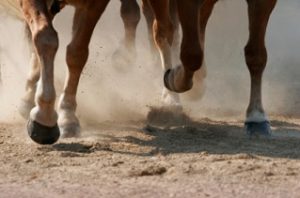
Editor’s Note: This article has been sourced from Riva’s Remedies and has been originally written by Equine Health & Nutrition Specialist, Marijke van de Water
Horse hooves require a tremendous amount of nutrition including protein, sugars, vitamins, and minerals. These nutrients are delivered by a generous blood supply through hundreds of blood vessels to stimulate growth and repair. The hoof wall is composed of 95% keratin, a tough insoluble and colourless protein that is rich in sulphur-containing methionine (an amino acid). The formation of keratin also requires adequate amounts of zinc and biotin. It is for this reason that many traditional hoof supplements contain these specific nutrients to support and strengthen the hoof wall. If these nutrients are truly deficient then these supplements will be helpful; however if there is no deficiency present benefits will be negligible. At this point it is useful to seek out other nutrients that can make a difference to hoof strength and structure – minerals such as sulphur, selenium, and silica are significant in overall hoof health. Silica promotes bone health, strengthens collagen and hardens the hoof wall, while selenium and sulphur contribute to collagen production and strengthen the cross link bonds in the keratin.
Sulphur is a critical nutrient for strengthening the amino acids (protein units) that serve as major building blocks in healthy collagen to form a strong hoof wall. Collagen fibres are naturally occurring proteins found exclusively in animals and they are the main proteins in all connective tissues. Collagen fibre makes up 25% to 35% of the whole body protein – its main function is to support and give structure to all the tissues around the cells. Since it has excellent tensile strength, collagen is the main component of cartilages, tendons, ligaments, skin and hoof wall. The fibres in hoof wall are very compact and dense. The strength of these fibres is increased by their unique structure – they twist, intersect and cross with each other. Sulphur molecules create very strong cross-links that hold the fibres together.
Obvious signs of sulphur deficiency include poor hoof growth, dry and cracking hooves, poor hair coat, skin conditions and allergies. Sulphur can be supplemented using Riva’s Flower Power which is pure ground sulphur fed at one tablespoon daily which equals 14 g of sulphur. This is also an excellent supplement for “scratches”.
Riva’s Circu+Plus contains pine bark extract which not only has natural levels of both sulphur and silica for strengthening and repairing hoof tissue but is also an anti-oxidant and natural anti-inflammatory that improves hoof circulation. Circu+Plus also contains Magnesium to relax any hoof tension, reduce pain and improve metabolism. Circu+Plus is an excellent supplement for acute and/or chronic laminitis. Feed one to two tablespoons daily: one tablespoon contains 200 mg of pine bark extract and 1,000 mg of magnesium citrate.
Sulphur is also very beneficial in homeopathic form as it helps to improve the metabolism of existing sulphur by increasing its absorption and utilization at the cellular level. Give one dose of Sulphur, 200C (5 pellets) – twice daily for 4 days.
A selenium deficiency in the hoof can appear as horizontal cracks near the top of the hoof below the coronet band, a yellowing frog and/or lameness due to either weak hoof structure or strained ligaments and tendons. Systemic symptoms of deficiency can include poor hair coat, fatigue, depression, poor immunity, low appetite, and muscle weakness. Selenium toxicity, on the other hand, is often characterized by similar symptoms as a deficiency – poor hair condition or loss of hair around the mane and tail, poor immunity, stiffness and lameness. In cases of chronic selenium toxicity, the hooves are almost always affected with deformities, overgrowth, horizontal ridging, cracking, and in advanced cases it will cause the hoof wall to separate from the foot resulting in a loss of the entire wall.
Selenium can be supplemented in either an inorganic form (known as sodium selenite, which is actually a by-product of copper mining) or in an organic form. Sodium selenite is the most common supplement available but is also the toxic form of selenium which is why it cannot be given in extreme doses. Toxic dosages can also be ingested by grazing in selenium toxic areas. However, there are many more horses with selenium deficiencies than horses with selenium excess since the majority of grazing areas in North America are low in selenium. Organic selenium is commercially produced by using yeast to incorporate inorganic selenium into amino acids. Organic selenium has no known toxicity and is absorbed and utilized much more effectively than the inorganic form. Allorganic minerals, including selenium, can be supplemented at a much lower dosage than inorganic minerals because they are metabolized much more effectively. Organic selenium can be effectively and safely dosed and most horses do not need more than 1,000 to 2,000 mcg daily. It is very beneficial for hoof health, liver detoxification, bone and muscle strength and a healthy immune system. It is never necessary to supplement any nutrient by injection – it is invasive and horses have a very efficient ability to absorb minerals through the intestines.
Silica is an under-valued and under-utilized mineral for hoof health. Silica is not only critical for the early stages of bone formation but also plays a major role in the formation of the collagen matrix of bone and cartilage. And it prevents these tissues from becoming brittle and rigid – a significant factor in the health of coffin and navicular bones. The formation of glycosaminoglycan, the main substance of the bone matrix, also relies on silica. Normally horses obtain small amounts of silica from grass and hay as all plants use silica to provide rigidity and structure to their leaves and stems. However, it is apparent that many horses do not receive adequate amounts to prevent hoof breakdown and/or bone problems. Of course, this is the case with so many nutrients since the lifestyle of most domesticated horses has not only limited the nutrients available to them, but has radically changed their nutritional requirements.
Deficiency symptoms of silica include weak and brittle hooves, sand cracks, abscesses, lameness, inflammation of tendons, and bone weakness with loss of density.
Some of the best plant sources for silica and sulphur supplementation is horsetail and oatstraw. Horsetail has a number of other benefits: strengthens the respiratory system, improves skin and hair coat, aids urinary function and increases calcium absorption. Horsetail is not toxic to horses as some sources suggest – most ‘weeds’ are beneficial and only toxic when horses don’t have enough to eat and have to resort to weeds as a food staple. Dried horsetail can be fed at one to two tablespoons daily. Oatstraw is an ingredient in the Riva’s Happy Foot as well as the Happy Horse and Happy Horse Senior. The Happy Horse herbal blends are a plant based source of over sixty-five trace minerals including selenium, vitamins and fibre and address the nutritional requirements for a variety of different health conditions.
Poor hoof circulation is always a factor in unhealthy hooves since improper hoof mechanism constricts blood supply and therefore the delivery of oxygen and nutrients. The most common causes of poor hoof circulation are lack of regular exercise, poor trimming practices and inappropriate diets – grain, sugar, excess grass and/or excess alfalfa. Riva’s Remedies Happy Foot provides herbal minerals (including silica, sulphur and selenium), improved circulation with cayenne pepper and natural pain relief.
Horse hooves are very much a reflection of the whole and the treatment of the hoof should always consider the whole health of the horse. Conversely, treating the whole health of the horse will always benefit the hoof.
Horses Don’t Need to Chew Fences
Editor’s Note: This article has been sourced from a content shared by Riva’s Remedies via their newsletter.
Chewing fences is not the same as eating wood or cribbing. Chewing fences is a way that horses try to communicate with their human caretakers. What might a fence chewer be trying to communicate? Here are the most common: boredom, loneliness, lack of companionship or a meaningful relationship, dissatisfaction with diet, infrequent feedings, dental problems or teething, lack of exercise, anxiety, and/or symptoms of pain or discomfort. I have owned many horses over many years and I have never had one tooth mark on any one of my fence rails no matter how small or large the area. Learn to listen to your horses!



